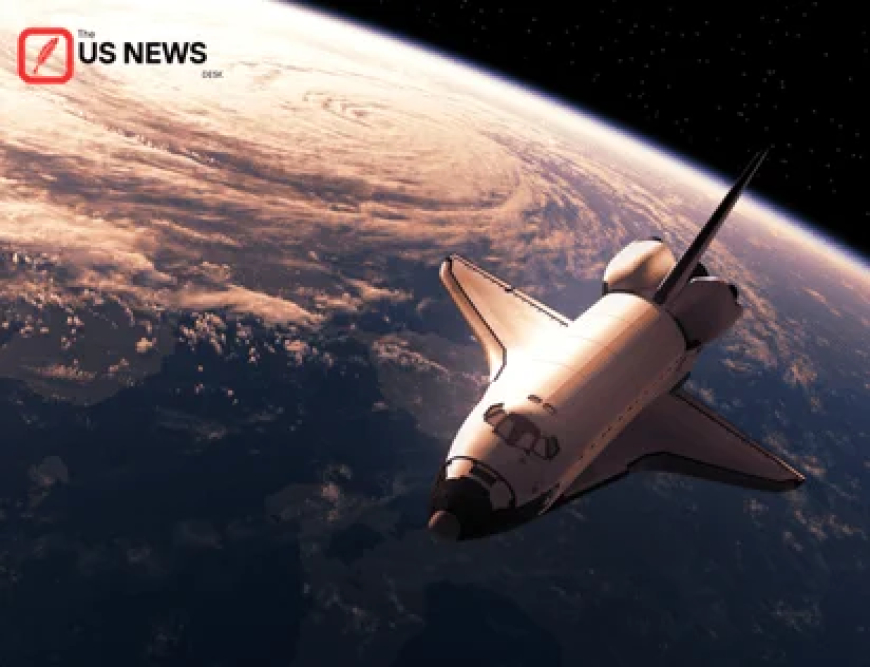Beyond the Launchpad: How Space Commercialization Is Redefining Access to Orbit and Lunar Missions
Advances in space commercialization are redefining access to orbit and lunar missions. From costs to regulation, learn how private innovation is reshaping U.S. space policy.

WASHINGTON, D.C. — A quiet revolution is unfolding above Earth. The commercialization of space—once dominated by government agencies—has shifted decisively toward private enterprise. From reusable rockets to lunar cargo landers, the new space economy is transforming how humanity reaches orbit and plans missions to the Moon. But this shift also raises pressing questions: who sets the rules, who bears the costs, and how national interests align—or clash—with private ambition.
A New Economy in Orbit
Just two decades ago, space launches were rare and almost exclusively state-run. Today, private companies are launching satellites weekly, resupplying the International Space Station, and developing new lunar mission hardware. Analysts estimate the global space economy now exceeds $600 billion, with projections nearing $1 trillion by 2035, driven by satellite services, space tourism, and lunar exploration.
The cost of access to orbit has plummeted. Innovations in reusable rocket technology—pioneered by companies like SpaceX and now emulated globally—have slashed launch prices from over $20,000 per kilogram to as little as $1,500. This price disruption has democratized satellite deployment, enabling universities, small nations, and even start-ups to send hardware into orbit.
Lunar Ambitions: From National Flags to Private Cargo
The Moon, once a Cold War symbol, has become the new frontier for commercial competition. U.S. companies under NASA’s Artemis program are preparing to deliver scientific payloads and commercial cargo through partnerships with firms such as Astrobotic and Intuitive Machines. These missions blur the line between national exploration and private enterprise, raising questions about ownership of lunar resources.
International law, under the Outer Space Treaty of 1967, prohibits sovereign claims to celestial bodies. Yet companies are already eyeing lunar water ice for fuel production and rare minerals for commercial use. Policymakers in Washington are now drafting frameworks to regulate what many experts call the coming “space gold rush.”
Regulation: Balancing Safety, Sovereignty, and Innovation
The U.S. Federal Aviation Administration (FAA) currently oversees launch licensing, while the Federal Communications Commission (FCC) manages satellite frequencies. But as private lunar and orbital projects multiply, regulatory gaps are emerging. Who is responsible if a private lunar lander crashes? Who monitors orbital debris created by failed commercial satellites?
Earlier this year, the National Space Council emphasized the need for streamlined licensing procedures while reinforcing national security oversight. Industry leaders argue that excessive regulation could slow innovation, while defense officials warn that unregulated growth may undermine space safety.
“Commercialization can’t mean a free-for-all,” said Dr. Karen West, a former NASA policy advisor. “But neither can it be smothered by outdated bureaucracy. The challenge is building a framework where innovation thrives without jeopardizing long-term sustainability.”
Innovation Driving New Frontiers
Private sector dynamism has unleashed a wave of breakthroughs. Beyond rockets, startups are investing in in-orbit manufacturing, where microgravity allows the production of materials—such as fiber optics—with properties superior to anything made on Earth. Others are experimenting with lunar construction techniques, using 3D printing and regolith as raw material for future bases.
This surge in private research complements national programs. NASA, the European Space Agency, and Japan’s JAXA are increasingly turning to commercial contractors for mission hardware. Experts argue this partnership model reduces costs and distributes risk, allowing agencies to focus on ambitious science missions while companies capture market opportunities.
National vs. Private Roles: A Strategic Balance
At its core, the debate over space commercialization is about balance. Nations still lead in setting strategic goals—planetary defense, deep-space science, or military satellite security—while companies increasingly provide the tools, logistics, and economic momentum to make those goals achievable.
For the United States, leadership in the commercial space economy is also a matter of geopolitical influence. As China expands its lunar base program and European firms grow more competitive, U.S. policymakers view private innovation as a critical asset in maintaining space dominance.
Conclusion: The Next Chapter of the Space Race
The space race of the 1960s was about planting flags. The new space race is about building sustainable economies beyond Earth. From orbit to the Moon, the intertwining of private ambition and national strategy is creating a space economy that is at once entrepreneurial, innovative, and deeply political.
The path forward will demand clear regulations, resilient partnerships, and a vision that goes beyond immediate profit to long-term human presence in space. As commercial rockets continue to light the skies, one truth is evident: space is no longer just the final frontier—it is the next marketplace.
What's Your Reaction?
 Like
0
Like
0
 Dislike
0
Dislike
0
 Love
0
Love
0
 Funny
0
Funny
0
 Angry
0
Angry
0
 Sad
0
Sad
0
 Wow
0
Wow
0




































